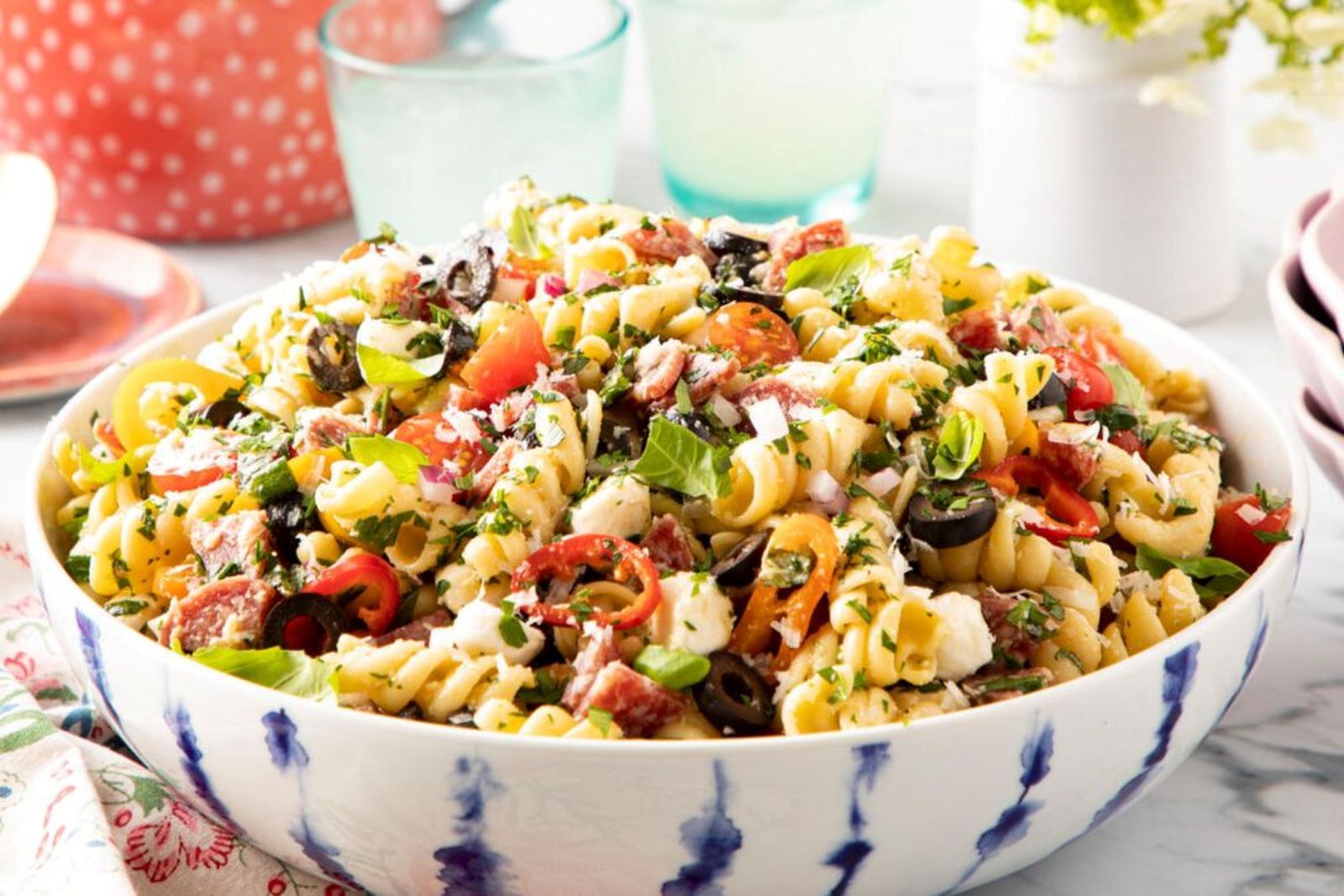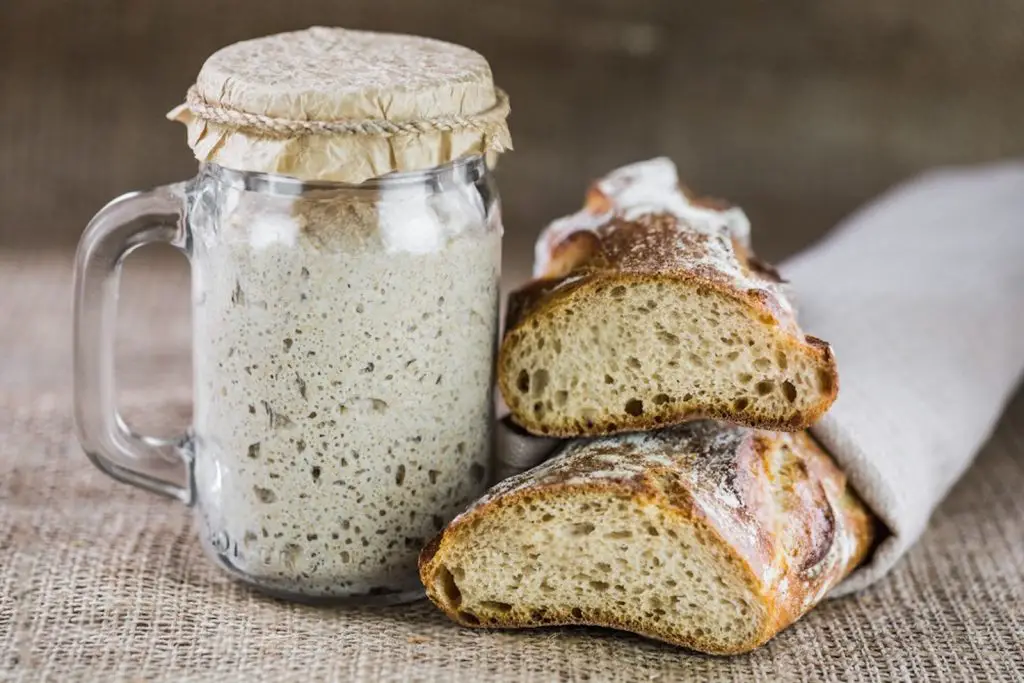
Pasta salad, the versatile and refreshing dish, is a popular choice for picnics, barbecues, and potlucks. With its combination of cooked pasta, crisp vegetables, and flavorful dressings, pasta salad offers a delightful medley of textures and tastes. Whether enjoyed as a side dish or a light main course, pasta salad is a crowd-pleaser that can be customized with various ingredients and dressings to suit personal preferences.
To make meal preparation more convenient or to have a ready-to-eat dish on hand, freezing pasta salad can be a practical solution. Freezing pasta salad not only helps preserve its flavors and textures but also provides a quick and easy solution for busy days or when you want a refreshing meal at a moment’s notice. In this guide, we will explore the best methods for freezing pasta salad, ensuring that you can enjoy its deliciousness and convenience whenever you desire, whether it’s for a quick lunch or a gathering with friends and family.
Here are the steps to freeze pasta salad:
Step 1: Allow the pasta salad to cool down
After preparing a delicious pasta salad, it’s important to allow it to cool down before freezing. This step is crucial because it helps the salad reach an appropriate temperature for freezing and prevents condensation from forming inside the packaging.
When you cook the pasta for the salad, it absorbs heat and moisture, which raises its internal temperature. If you immediately transfer the warm pasta salad to the freezer, it can create excess moisture that will turn into ice crystals when frozen. These ice crystals can affect the texture and overall quality of the salad when it’s thawed later.
By allowing the pasta salad to cool down at room temperature, you give it time to release excess heat and moisture. This process helps to lower the internal temperature of the salad and reduce the amount of moisture present. Cooling the salad also allows the flavors to meld together and enhances the taste.
During the cooling process, it’s essential to ensure that the pasta salad is protected from contaminants. Covering the salad with a clean kitchen towel or placing a lid over the container will prevent any external factors, such as dust or insects, from coming into contact with the salad.
It’s important to note that cooling the pasta salad at room temperature should only be done for a limited time, usually no more than two hours, to avoid potential bacterial growth. If the room temperature is particularly warm or if you live in a hot climate, you may want to speed up the cooling process by placing the salad in the refrigerator for a shorter period before freezing.This simple step is an important part of the overall process of freezing pasta salad and preserving its quality for future enjoyment.
Step 2: Portion the pasta salad
Once your pasta salad has cooled down, it’s time to decide whether you want to freeze the entire batch or divide it into smaller portions. Portioning the pasta salad offers several benefits, including reducing waste, ensuring convenient serving sizes, and facilitating the thawing process when you’re ready to enjoy it. Here’s why:
- Reduce waste: Portioning the pasta salad allows you to freeze only what you need at a given time. If you freeze the entire batch and later realize you only need a portion of it, you’ll have to thaw the entire salad, which may result in leftovers that could potentially go to waste. By portioning the salad, you can defrost and enjoy only the amount you need, minimizing waste and ensuring that each serving is fresh.
- Convenient serving sizes: Dividing the pasta salad into individual portions provides convenience when it comes to serving. Whether you’re preparing lunches for work or school, or if you’re hosting a small gathering, having pre-portioned servings makes it easy to grab and go. It saves you time and effort, as you won’t need to measure or separate the salad after it’s been thawed.
- Facilitate thawing process: When you freeze pasta salad in smaller portions, it thaws more quickly and evenly compared to freezing it as a whole. Smaller portions have a larger surface area exposed to the thawing process, allowing them to reach the desired temperature more efficiently. This means you can enjoy your pasta salad sooner, especially when you’re in a hurry or have limited time.
To portion the pasta salad, you can use various freezer-safe containers or resealable plastic bags. Consider the number of servings you typically need or the size of each individual portion you prefer. If you’re using containers, make sure they are airtight to prevent freezer burn. For plastic bags, squeeze out as much air as possible before sealing them tightly.
Step 3: Package the pasta salad
Once you have decided on the portion sizes for your pasta salad, it’s time to package them properly for freezing. Packaging the pasta salad in freezer-safe containers or resealable plastic bags is essential to protect it from freezer burn and maintain its freshness. Here’s why it’s important to use airtight and leak-proof packaging:
- Prevent freezer burn: Freezer burn occurs when food is exposed to air and moisture in the freezer. It leads to dehydration and oxidation, resulting in a dry, discolored, and unpleasant texture. By using airtight packaging, such as freezer-safe containers or resealable plastic bags, you create a barrier that prevents air from reaching the pasta salad. This significantly reduces the risk of freezer burn, helping to preserve the salad’s quality and taste.
- Maintain freshness: Airtight packaging also helps to maintain the freshness of the pasta salad. It prevents the absorption of odors from other foods in the freezer, which could otherwise impact the flavor of the salad. Additionally, by keeping the salad tightly sealed, you minimize contact with moisture, reducing the chances of ice crystals forming and compromising the texture and taste of the salad.
- Leak-proof protection: It’s crucial to choose packaging that is leak-proof to avoid any spills or cross-contamination in the freezer. Freezer-safe containers with secure lids or resealable plastic bags with reliable seals are recommended. This ensures that any dressings, sauces, or liquids in the pasta salad remain contained, preventing them from leaking and causing a mess in your freezer.
When using containers, fill them up to the appropriate level, leaving some headspace to account for potential expansion during freezing. If using resealable plastic bags, squeeze out as much air as possible before sealing them tightly to create a compact package.
Step 4: Seal the packaging
To ensure the best preservation of your pasta salad when freezing, it is crucial to remove excess air from the containers or bags before sealing them tightly. This step plays a significant role in minimizing the potential for freezer burn and keeping the pasta salad in optimal condition.
Freezer burn is a common issue that occurs when food is exposed to air and moisture in the freezer over time. It leads to the dehydration and oxidation of the food, resulting in a dry and unappetizing texture, as well as a loss of flavor and nutritional value. By removing excess air from the packaging, you create a more protective environment for the pasta salad, significantly reducing the risk of freezer burn.
Excess air in the packaging can contribute to the formation of ice crystals on the surface of the pasta salad. These ice crystals can lead to a negative impact on the texture and taste of the salad when it is thawed later on. By removing the air, you minimize the available space for moisture to accumulate, thus reducing the formation of ice crystals and preserving the salad’s quality.
When excess air is present in the packaging, it also increases the likelihood of the pasta salad coming into contact with oxygen. Oxygen can contribute to the oxidation of the salad’s fats and flavors, leading to rancidity and a decline in overall taste. By sealing the packaging tightly and removing excess air, you create a barrier against oxygen exposure, helping to maintain the salad’s freshness and flavors during freezing.
Step 5: Label and date the containers
After packaging your pasta salad for freezing, it’s essential to label and date each container or bag. By clearly indicating the name of the pasta salad and the date of freezing, you can keep track of its contents and ensure that you use them within a reasonable time frame. Here’s why this step is important:
- Identification and organization: Labeling the containers or bags allows you to easily identify the pasta salad among other items in your freezer. When you have multiple frozen dishes or ingredients, it can be challenging to differentiate them solely by appearance. By labeling each container with the name of the pasta salad, you can quickly locate and retrieve it when needed. This promotes organization and saves you time when searching through your freezer.
- Tracking freshness and storage duration: Including the date of freezing on the labels helps you keep track of how long the pasta salad has been in the freezer. It serves as a reference point to ensure that you use the salad within a reasonable time frame. Different types of pasta salads have varying recommended storage durations, but as a general guideline, it’s best to consume frozen pasta salads within three to four months for optimal quality. The date on the label helps you prioritize the consumption of older portions and maintain food safety.
- Avoiding confusion: Labeling containers or bags prevents confusion regarding the contents of each package. This is particularly important if you have different variations or flavors of pasta salad in your freezer. By clearly indicating the name, you can easily distinguish between, for example, a tomato-based pasta salad and a pesto-based one. This eliminates any surprises or guesswork when selecting a specific pasta salad for thawing.
To label the containers, you can use a marker directly on the surface or adhesive labels that stick securely to the packaging. Write the name of the pasta salad in a clear and legible manner, ensuring it is visible at a glance. Below the name, write the date of freezing, including the month and year.
Step 6: Place the pasta salad in the freezer
After properly labeling and dating your sealed containers or bags of pasta salad, it’s time to place them in the freezer. When arranging the containers or bags, it’s important to ensure they are placed in a flat position. This arrangement allows for easier stacking and prevents potential spills or leaks. Here’s why this step is important:
- Efficient use of freezer space: Placing the pasta salad containers or bags flat in the freezer allows for efficient use of space. By stacking them on top of each other or arranging them side by side, you maximize the available space in your freezer. This is particularly helpful if you have limited freezer space or if you plan to freeze multiple portions of pasta salad. Utilizing the space effectively ensures that you can store other items in the freezer without any unnecessary wastage of space.
- Stability and prevention of spills: Placing the containers or bags in a flat position helps to maintain stability and prevent any potential spills or leaks. When frozen, the pasta salad may expand slightly, and if the containers or bags are not placed flat, there’s a higher risk of them tipping over or becoming unstable. This could lead to leaks or spills, causing a mess in your freezer and potentially contaminating other items. By arranging them flat, you ensure that the containers or bags remain secure and stable throughout the freezing process.
- Easy retrieval and organization: Stacking the containers or bags in a flat position also allows for easy retrieval and organization. When you need to access a specific portion of pasta salad, it’s simpler to locate and remove it if the containers or bags are neatly stacked and arranged. This promotes efficient meal planning and preparation, as you can quickly identify and select the desired portion without having to rearrange other items in the freezer.
It’s important to note that while arranging the containers or bags flat is recommended, it’s also advisable to leave some space between them to allow for proper air circulation. Adequate air circulation helps maintain a consistent freezing temperature and ensures that the pasta salad freezes evenly.
How long can I freeze pasta salad in the freezer?
You can freeze pasta salad for up to 3 months without significant loss of quality. Beyond that timeframe, the salad may start to lose its texture and flavors. Freezing helps to preserve the salad, but it’s best to consume it within this recommended duration. Proper storage and packaging techniqus, such as removing excess air and sealing tightly, can help maintain the salad’s quality during freezing. Remember to label and date the containers to keep track of storage time. When in doubt, trust your senses and discard the salad if it shows signs of freezer burn or deterioration.
Other related questions
How do I thaw frozen pasta salad?
To thaw frozen pasta salad, transfer it from the freezer to the refrigerator and allow it to thaw gradually. This process typically takes several hours overnight, depending on the portion size and thickness of the salad. Avoid thawing at room temperature to minimize the risk of bacterial growth. Once fully thawed, give the pasta salad a gentle toss to redistribute any dressing or ingredients that may have separated during freezing. It is now ready to be served and enjoyed.
Can I refreeze pasta salad after it has been thawed?
It is generally not recommended to refreeze pasta salad after it has been thawed. The process of thawing and refreezing can compromise the quality and safety of the salad. Each time you freeze and thaw food, it undergoes temperature fluctuations that can affect its texture and taste. Moreover, the potential for bacterial growth increases with multiple thawing and refreezing cycles. To minimize food waste and ensure optimal quality, it is advisable to portion the pasta salad appropriately before freezing, so you only thaw and consume what you need.
How do I know if frozen pasta salad has gone bad?
To determine if frozen pasta salad has gone bad, there are several signs to look out for. First, check for any noticeable changes in texture. If the pasta appears mushy or slimy, it may be an indication of spoilage. Second, inspect the color of the ingredients. If there are significant discolorations or an off-putting appearance, it’s best to discard the salad. Third, use your sense of smell. If there is a foul or unusual odor coming from the pasta salad, it is likely spoiled. Additionally, if you notice any mold growth, it is a clear indication that the salad has gone bad.When in doubt, it is always safer to discard any frozen pasta salad that raises concerns about its freshness and quality.
Can I use frozen pasta salad with the fresh ones?
While it is technically possible to combine frozen pasta salad with fresh ones, it is not recommended for optimal taste and texture. Frozen pasta salad may have a different texture and consistency compared to fresh salad due to the freezing and thawing process. Mixing frozen and fresh salad can result in an uneven distribution of ingredients and dressing, affecting the overall taste and presentation. It’s generally best to enjoy the frozen pasta salad separately and use the fresh salad ingredients to create a new batch when needed. This ensures that each salad retains its desired qualities and provides a more enjoyable dining experience.
Does freezing affect pasta salad?
Freezing can affect pasta salad to some extent. The freezing process may cause changes in the texture of the pasta, making it slightly softer or firmer upon thawing. Additionally, the dressing or sauce in the salad may separate or become less creamy after freezing and thawing. Some ingredients, especially vegetables, may also lose their crispness or become slightly softer. However, with proper packaging and careful thawing, these effects can be minimized, allowing the pasta salad to still be enjoyable.
Can I freeze pasta salad that contains olives or pickled ingredients?
Yes, you can freeze pasta salad that contains olives or pickled ingredients. However, keep in mind that freezing may slightly alter the texture and flavor of these ingredients. Thawed olives may become softer, and pickled ingredients may lose some of their crispness. If you are fine with these potential changes, ensure that the pasta salad is properly sealed to prevent freezer burn and maintain its overall quality.
Can I freeze pasta salad that has been dressed with pesto or other herb-based sauces?
Yes, you can freeze pasta salad that has been dressed with pesto or other herb-based sauces. However, it’s important to note that the texture and flavors of the sauce may change slightly after freezing. Pesto and herb-based sauces can sometimes darken in color and lose some of their vibrant flavors. To minimize these changes, consider slightly undercooking the pasta and using a slightly thicker sauce. Properly package the salad to prevent freezer burn and label it with the date. Thaw the salad in the refrigerator and give it a gentle toss before serving to redistribute the sauce and enhance its taste.
Can I freeze pasta salad that contains mayonnaise or dairy-based dressings?
It is generally not recommended to freeze pasta salad that contains mayonnaise or dairy-based dressings. Freezing may cause the mayonnaise to separate and become watery, resulting in an undesirable texture and taste. Dairy-based dressings can also experience texture changes and may become grainy or curdle after thawing. If you really need to freeze a pasta salad with these ingredients, consider using alternative dressings that are more freezer-friendly, such as oil-based dressings or vinaigrettes. Always label and date the containers, and be prepared for potential texture and flavor alterations upon thawing.








